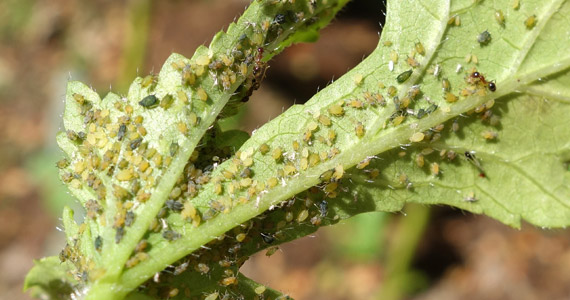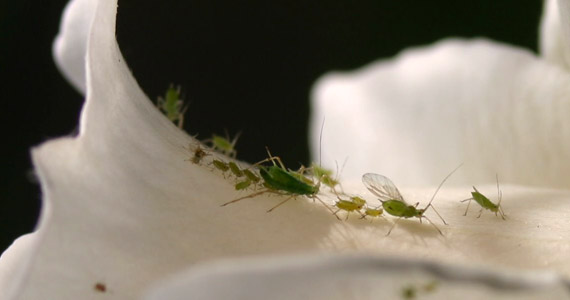The Plumeria Troubleshooting Guide helps you quickly identify and resolve common issues such as yellowing leaves, poor blooming, pests, and root problems—ensuring your plumeria stays healthy and beautiful year-round.
About The Plumeria | Beginners Guide | History and Culture Guide | Articles and Inspiration
APHIDS: How do I control aphids on my Plumeria plants?
How to Control Aphids on Your Plumeria Plants
Introduction
Aphids are common garden pests that can infest Plumeria plants, causing significant damage to the leaves and stunting plant growth. Effective aphid control is crucial to maintaining the health and beauty of your Plumeria. This comprehensive guide will explore various methods to manage and prevent aphid infestations on Plumeria plants.
Understanding Aphids
Aphids are small, soft-bodied insects with bulbous abdomens, typically less than 4 mm in length. They can appear in various colors, including green, yellow, brown, and black. Aphids are some of the most destructive pests in temperate regions, with winged aphids posing an even greater threat due to their ability to spread quickly and cause extensive damage.
What Are Aphids?
Aphids, also known as plant lice, belong to a superfamily of insects that includes over 4,000 species. These plant-specific parasites can significantly impact plant health.
Signs of Aphid Infestation
Aphids can cause various symptoms in plants, including reduced growth rates, mottled or yellowing leaves, stunted growth, curled leaves, browning, wilting, decreased yields, and, in severe cases, plant death.
Preventive Measures
Several cultivation techniques can help prevent or minimize aphid infestations. Regular monitoring and early intervention are key to keeping these pests under control.
Identifying Aphids
Appearance: Aphids are characterized by their small size and pear-shaped bodies. Their color can vary widely, including shades of green, yellow, brown, and black.
Location: These pests are often found in clusters on the undersides of leaves, where they feed on the plant’s sap.
Damage: Aphids cause leaves to become distorted, yellow, or curl upward. They also produce a sticky substance called honeydew, which can attract ants and encourage the growth of sooty mold.
Aphid Life Cycle
Aphids can be either winged or wingless. Typically, the first generation that hatches after winter is wingless. As populations grow and space on the host plant becomes limited, a generation of winged aphids is produced, allowing them to spread to new plants more rapidly.
By understanding the biology and behavior of aphids, you can implement effective strategies to manage and prevent infestations, ensuring the health and vitality of your Plumeria plants and preventing them from migrating from other hosts. All the aphids born from the winter eggs are females. Several more generations of female aphids are born during spring and summer. Females can live for 25 days, during which they can each produce up to 80 new aphids. Spring and summer reproduction occurs asexually – without males.

Symptoms of Aphid Infestation
Aphids feed on plants’ phloem sap, weakening plant health and metabolic imbalances. This feeding can cause leaves to twist and, in severe cases, result in leaf drop. The loss of leaves directly impacts the quantity and quality of the final harvest. Additionally, aphids introduce toxins into the plant, disrupting its overall development.
The honeydew excreted by aphids creates a favorable environment for various fungi to grow. These fungi can form a layer on the leaves, obstructing light absorption and weakening the plant.
However, the most detrimental impact of aphids is their ability to transmit viruses. Winged aphids, in particular, can spread dozens of viruses from an infected plant to a healthy one in just a few seconds. Unfortunately, there is no cure for viral infections in plants, meaning that an infected plant will likely experience a significant reduction in productivity unless it is resistant or tolerant.

CONTROL AND PREVENTION
HOW TO GET RID OF APHIDS
Cold Water Spray: Sometimes, a blast of cold water is all it takes to dislodge aphids from your plants. Spray the leaves thoroughly with cold water.
Flour Dusting: If you have an aphid problem, dust the plants with flour. This can cause aphids to become constipated, hindering their ability to feed.
Biological Controls and Insecticidal Soap: Use commercially available biological controls or spray your plants with insecticidal soap or horticultural oil to eliminate aphids.
Dish Soap Solution: Wipe or spray the leaves of your plants with a mild solution of water and a few drops of dishwashing detergent like Ivory. Mix 1 quart of water with 1 teaspoon of liquid dish soap and a pinch of cayenne pepper, and spray it directly on the plants without dilution.
Organic Controls: Utilize organic treatments such as soapy water emulsion, horticultural oil, or pyrethrum spray. Apply soapy water every 2-3 days for two weeks to ensure effectiveness.
Homemade Sprays: Try homemade garlic or tomato-leaf sprays to deter aphids naturally.
Cultural Practices: Implement several cultivation techniques to prevent or minimize aphid infestations, including:
- Weed Control: Remove weeds that can harbor aphid eggs and adults.
- Insect Nets: Use insect nets to cover crops and protect them from aphid invasions.
- Balanced Fertilization: Avoid excessive use of nitrogen-rich fertilizers.
- Crop Residue Removal: Clear away crop residues that can provide a breeding ground for aphids.
- Banker Plants: Establish plant species that attract aphid predators to keep the pest population under control.
Preventing Aphid Infestations
Regular Inspection: Routinely check your Plumeria for signs of aphids, such as distorted leaves or honeydew.
Pruning and Maintenance: Prune your Plumeria to improve airflow and remove any dead or crowded growth that can attract aphids.
Avoid Over-Fertilization: Excessive nitrogen-rich fertilization can encourage aphid infestations. Use balanced fertilizers instead.
Plant Diversity: Surround your Plumeria with other plants that naturally deter aphids, such as marigolds or chrysanthemums.
Ant Control: Ants often protect aphids from natural predators. Use ant baits or barriers to keep ants away from your Plumeria.
Dormant Oil Spray: Apply dormant oil to kill overwintering aphid eggs.
Beneficial Insects: Purchase beneficial insects like lady beetles, lacewings, and parasitic wasps that feed on aphids. These can be ordered online and will help keep aphid populations in check.
Companion Planting: Use companion plants to repel aphids or attract their natural predators. For example:
- Catnip: Repels aphids.
- Mustard and Nasturtium: Can be used as trap plants to lure aphids away from more valuable crops.
- Garlic and Chives: Repel aphids when planted near lettuce, peas, or rose bushes.
Controlling Aphids on Plumeria
Pruning: Inspect your Plumeria for heavily infested branches and prune them off. Dispose of the pruned material away from your garden.
Strong Water Spray: Use a strong stream of water from a hose to dislodge aphids from the leaves. Repeat this process regularly to prevent re-infestation.
Insecticidal Soap: Apply insecticidal soap to the affected areas of your Plumeria, following the manufacturer’s instructions. This method is safe for most beneficial insects.
Neem Oil: Neem oil is an organic and effective solution for controlling aphids. Dilute according to the instructions and spray on the Plumeria leaves.
Beneficial Insects: Encourage natural predators like ladybugs, lacewings, and parasitic wasps, which feed on aphids and help keep their populations in check.
Yellow Sticky Traps: Place yellow sticky traps near your Plumeria to capture flying aphids and reduce their numbers.
Keys to Success
- Regularly inspect your Plumeria for aphids.
- Take immediate action when aphids are detected.
- Utilize organic control methods whenever possible.
- Encourage natural predators and beneficial insects.
Conclusion
Controlling and preventing aphid infestations on your Plumeria plants is essential for maintaining their health and appearance. By implementing these methods and staying vigilant, you can enjoy a vibrant and pest-free Plumeria garden.
For more in-depth information and personalized advice, visit PlumeriaCareGuide.com.